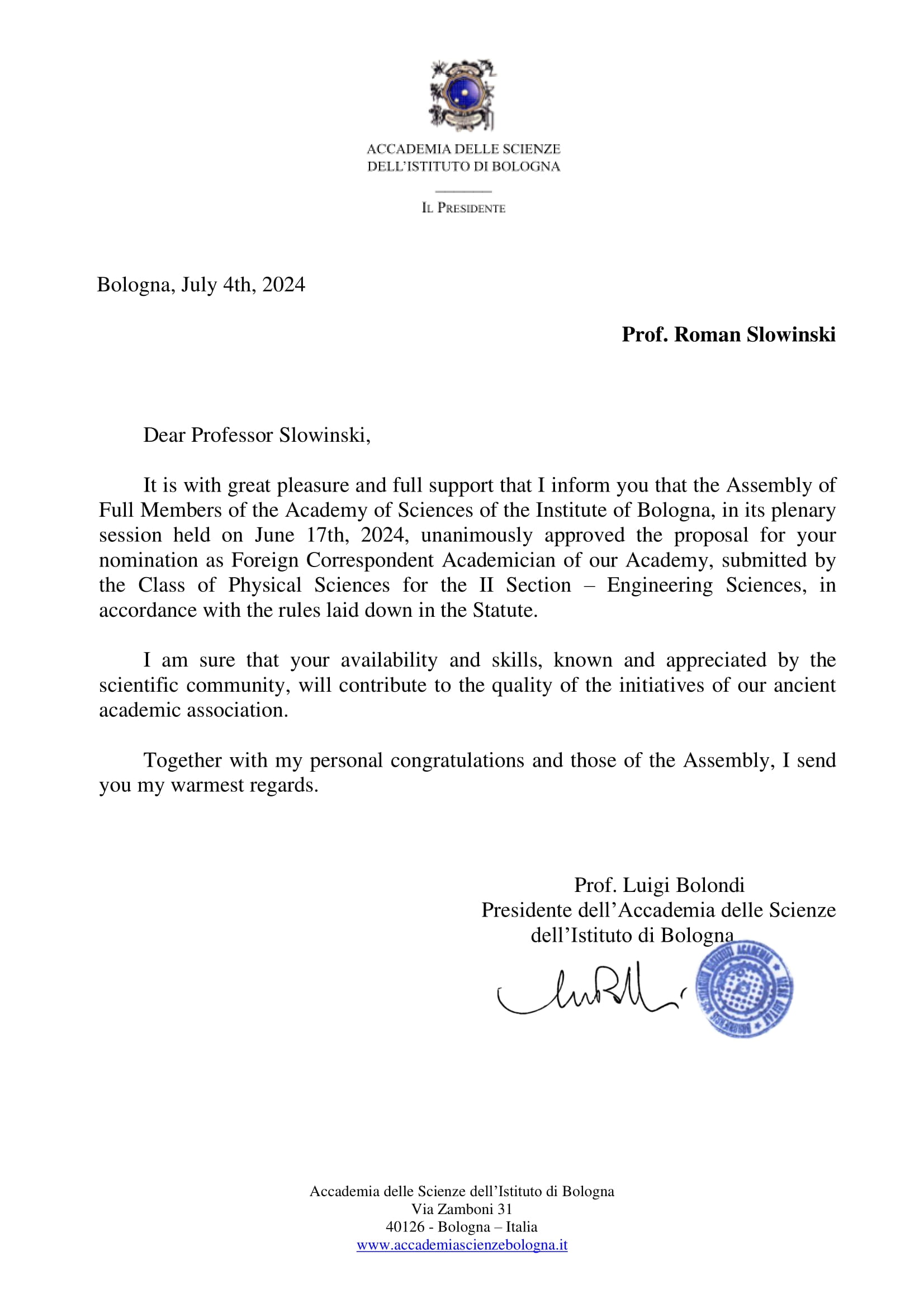We are pleased to announce that prof. Roman Słowiński was unanimously admitted to the Academy of Sciences of the Bologna Institute as a Foreign Corresponding Member.
Congratulations!
The Academy of Sciences of the Bologna Institute (L'Accademia delle Scienze dell'Istituto di Bologna), founded in 1690, has a history stretching back over three centuries. Its members include famous Italian and foreign scientists such as Luigi Galvani, Guglielmo Marconi, Albert Einstein, Giovanni Pascoli, Maria Skłodowska-Curie and many other Italian and foreign scientists.
Founded by the young astronomer Eustachio Manfredi, the Academy was initially called the Accademia degli Inquieti (The Restless) and only later became the Academy of Sciences after merging with the Scientific Institute founded in 1711 by Count Luigi Ferdinando Marsili. The Academy was to become an important engine for the reform of the University of Bologna.
Initially devoted exclusively to experimental, medical and physical-mathematical sciences, it became an advocate of the decisive progress of scientific research in Bologna following the theories of Malpighi, Descartes and Newton, as well as the doctrines of Copernicus, Galileo and Bacon. In the late 17th century, the Academy of Sciences reached new heights thanks to one of its presidents, Luigi Galvani, who revolutionized the science of human and animal physiology. The Academy then became one of the most important European and world academies, famous for the excellence of its scientists. Its members included Alessandro Volta, Laura Bassi, Mikhail Lomonosov, Anders Celsius, Georges Louis Leclerc Buffon and many other distinguished Italian and European scientists.
Well supported and appreciated by Restoration popes such as Gregory XVI, the Academy of Sciences played an authoritative role as a state advisor. Pope Pius IX recognized it as a key institution for scientific and social progress in the Papal State.
In the 19th century, after an initial decline in importance due to the Napoleonic period, thanks to research in medicine, science and mathematics, the Academy became the most active research center in the Bologna area, where university professors presented their latest discoveries.
After the period of fascism and World War II, the Academy of Bologna made every effort to regain its former glory. The new structure included the Faculty of Humanities and the Faculty of Physical Sciences - the latter includes the Engineering Sciences section, where Prof. Roman Słowiński is one of 19 foreign correspondents (https://site.unibo.it/accademiascienzebologna/en/members/ii-section-engineering-sciences).


